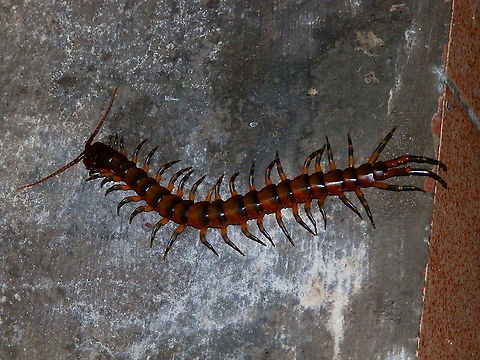
Appearance
This is a large species which can grow up to 10 to 20 cm in length or even more. It has colour variations. Its body is usually red or reddish brown with yellow or yellow-orange legs. In common with other members of genus Scolopendra, it has 21 body segments with each segment having one pair of legs attached. A pair of modified legs known as forcipules can be found on its head, which is covered by a flat shield and bears a pair of antennae. The forcipules are the major tools used by the centipede to kill its prey or for defense, as they have sharp claws that connect to venom glands. Centipedes breathe through the openings located along sides of their bodies. These openings are either round-shaped or S-shaped. They have simple eyes with poor vision, so they rely much on touch and their chemoreceptors.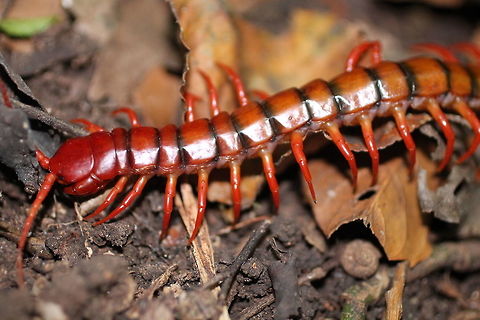
Naming
The number of subspecies of ''S. subspinipes'' is unclear and varies between authors. Taxonomic characters have incorporated plastic traits such as colour and sulcus structure and the number and position of spines, producing indistinguishable and intergrading subspecies. A 2012 review found that one former subspecies, ''S. subspinipes cingulatoides'' is in fact a distinct species, and that ''S. subspinipes'' has no valid subspecies.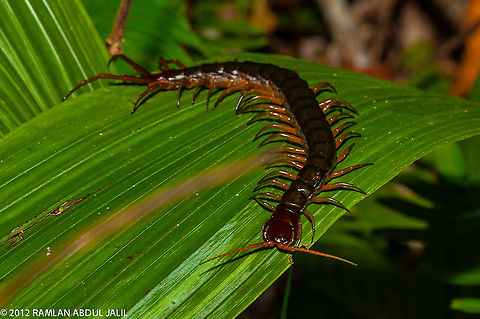
Behavior
This is an aggressive and nervous arthropod which is ready to strike if interfered with and is sensitive to vibrations nearby. It preys primarily on insects or other predatory arthropods , however, if it is large enough to overpower small vertebrates like mice or small reptiles, it will readily attempt to consume them as well. It tends to try to eat almost every living animal it encounters that is not longer than itself. It attacks its prey with the last prehensorial legs, then curves its head quickly behind to implant its venomous jaws deeply and firmly into the prey. The prey is held by the centipede's other legs until it dies from the fast-acting venom. During a fight, the centipede will use its entire body coiling the prey or enemy with its legs firmly attaching to the body of the opponent. Then, it will quickly penetrate its forcipules into the victim for venom injection.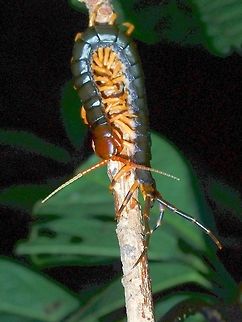
Habitat
The species can be found in tropical and subtropical regions throughout the Old World. It is also one of only three species of centipedes in Hawaii.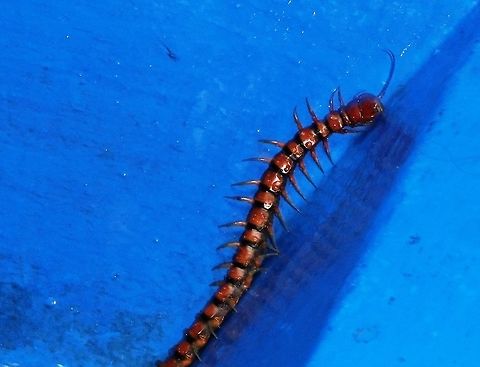
Reproduction
The male produces capsules containing mature sperm cells, spermatophores, which are deposited in a reservoir called the spermathecae of the female during mating. The female then fertilizes her immature eggs, oocytes, and deposits them in a dark, protected area. The female lays 50 to 80 eggs which she vigilantly protects until they hatch and the baby centipede molt once. If danger is detected she will wrap around her babies to keep them safe. The young centipedes molt once each year, and take three to four years to attain full adult size. Adults molt once every year. They may live for 10 years or more.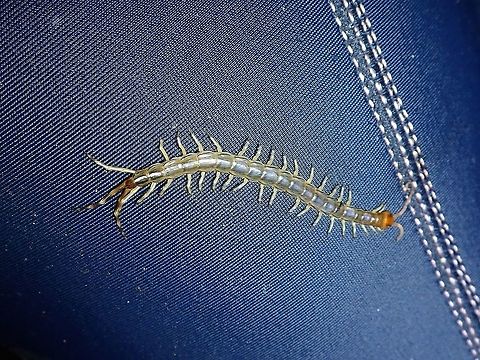
Food
This is an aggressive and nervous arthropod which is ready to strike if interfered with and is sensitive to vibrations nearby. It preys primarily on insects or other predatory arthropods , however, if it is large enough to overpower small vertebrates like mice or small reptiles, it will readily attempt to consume them as well. It tends to try to eat almost every living animal it encounters that is not longer than itself. It attacks its prey with the last prehensorial legs, then curves its head quickly behind to implant its venomous jaws deeply and firmly into the prey. The prey is held by the centipede's other legs until it dies from the fast-acting venom. During a fight, the centipede will use its entire body coiling the prey or enemy with its legs firmly attaching to the body of the opponent. Then, it will quickly penetrate its forcipules into the victim for venom injection.Defense
''Scolopendra subspinipes'' has been reported as the apparent cause of a human death. The fatal case was in Philippines in which the centipede bit a seven-year-old girl on her head. She died 29 hours later. There have been no other verifiable cases of centipede bite being implicated in human fatalities.Uses
''S. subspinipes'' is a popular pet among arthropod hobbyists. The centipede was a traditional food source for Aboriginal AustraliansReferences:
Some text fragments are auto parsed from Wikipedia.